and the distribution of digital products.
DM Television
Validator or Node Operator? Understanding Key Advantages and Differences with Ethereum’s DVT
Ethereum Staking is a fundamental activity for consolidating the crypto economic security of the network and relies on the interaction of two key players within the Proof-of-Stake scheme: Node Operators and Validators. Understanding the roles they play in the security and operability of the Ethereum network is more crucial than ever, especially now that Ethereum Staking is attracting increasing interest from institutional players.
\

\ Any individual can perform the role of an Ethereum node operator or an Ethereum Validator. You just need to be aware of the specific functions performed by both actors, which are often erratically confused due to their similarities, generating a problem of centralization in the hands of a few both due to ignorance and to other factors beyond the economic ones, which are not within the scope of this post.
\ Furthermore, it is important to consider that the centralization of these actors into the hands of a few can be mitigated with the introduction of Distributed Validator Technology (DVT), which opens the door to new forms of decentralization and resilience. And as DVT gains prominence, the traditional roles of nodes and validators are being reshaped to enhance decentralization, boost staking rewards and significantly bolster the security of the Ethereum network.
\ This article will explore the core differences between validators and node operators, their respective advantages, and how DVT redefines these roles within Ethereum's ecosystem.
Node Operators and their role in the Ethereum Network What Is a Node Operator?In a nutshell, an Ethereum node operator manages a full or light node in Ethereum. Among the key node operator responsibilities is efficiently running validators on the network to maximize staking rewards.
\ Node operators ensure their nodes stay online, connected to the Ethereum network, and run smoothly. Ethereum nodes can take different forms, with the most common being:
\
- Full Nodes: These store a complete copy of the blockchain and validate transactions based on the entire Ethereum ledger history.
- Light Nodes: Store only headers, allowing them to verify transactions without the need for full historical data.
\ A third type of node, known as an 'archive node,' is a derivation of full nodes that never delete downloaded information, making them useful for cases such as block explorers, wallet providers, and others.
\

\ It is important to note here that all nodes are composed of two software called clients: the Consensus Client (CL) and the Execution Client (EL). However, when a third piece of software known as 'validator' is introduced to the consensus client, we are talking about running a validator node.
\
“Validator Nodes, equipped with consensus and execution clients, uphold the network’s integrity”.
\ From the point of view of DVT-based protocols like SafeStake, a node operator is an entity or user that manages a validator node on a computer with an Ethereum wallet that, in turn, registers to the protocol's smart contracts. The node can create as many minipools as it wants, and they can all run together on the same machine.
\ It is important to add that with SafeStake, they do not require any additional hardware, installation, or advanced knowledge to run this type of node.
\
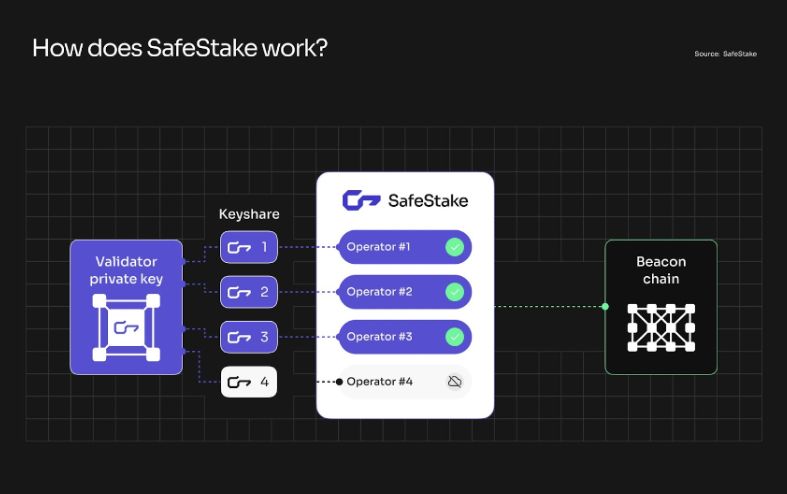
\ In SafeStake, minipools are a new type of validator configuration where a user or entity deposits a minimum threshold of 8 ETH to help form a 32 ETH Beacon Chain validator.
\
Responsibilities of Node Operators\ Nodes are critical to ensuring that Ethereum remains decentralized because they provide infrastructure for distributed transaction validation and data storage.
\ In the context of Distributed Validator Technology (DVT), node operators could potentially play an expanded role by participating in the distributed validation process and sharing responsibilities with other nodes to achieve greater decentralization and fault tolerance.
\
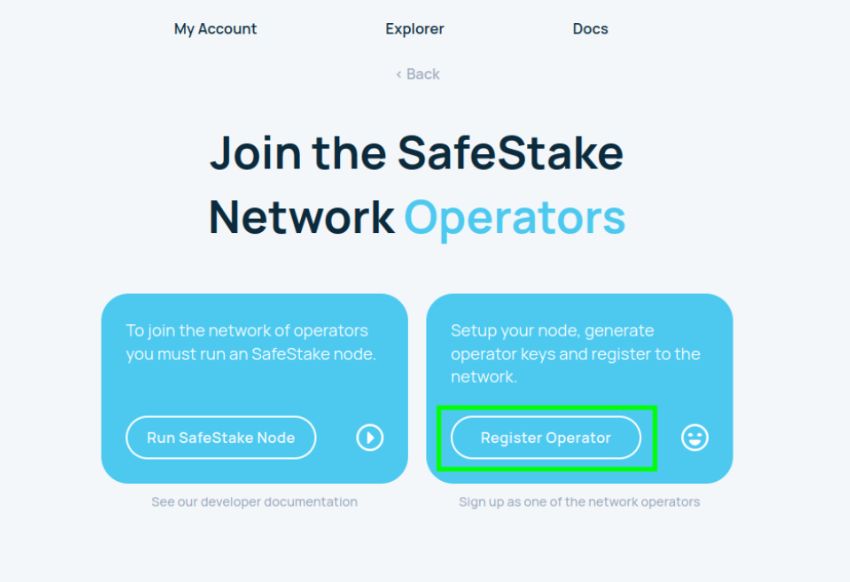
\ While an Ethereum node operator is not necessarily a validator, they are still crucial as, in the case of SafeStake, they helps properly configure minipools and secure them from external (or internal) threats to keep the validator 'alive' while participating in Ethereum staking rewards.
\ In short, the key responsibilities of node operator for deploying and managing nodes in DVT-based protocols are:
\
- Proper configuration of the software needed to run the minipools to perform the validation
- Online availability of the node for the correct validation of duties pn the Beacon Chain
- Take care of the security of your nodes network and adequate protection to prevent internal or external attacks that jeopardize the correct validation.
- Maximize staking rewards by executing the minipools with the highest possible quality to perform validation.
- Take care of the proper maintenance of the nodes under your care, seeking to schedule the necessary software/hardware upgrades to maintain the life of your validator(s)
\
The Role of a Validator What Is an Ethereum Validator?Analogous to nodes, an Ethereum validator is basically a Beacon Chain address with a balance equal to or greater than 32 ETH at the execution layer that is responsible for proposing and verifying blocks of transactions.
\ It is through validators that Ethereum staking takes place. Therefore, if validators act dishonestly, they risk being penalized (slashing) by losing part of their staked funds.
\ Thus, from the perspective of a common user, a validator is an individual who performs staking alone (solo staking) or through a pool (pooled staking) where resources (ETH) are combined to share the responsibilities and rewards of validation.
\ However, from the anatomical perspective of a validator node, as the official Ethereum site points out, a validator is any computer running software to verify blocks and transaction data made up of three pieces of software: a consensus client (CL), an execution client (EL) and a third piece of software known as a 'validator', which can be added to the consensus client for a node to participate in network protection.
\ Ethereum validator nodes are typically managed by individuals or service providers. With DVT-based protocols like SafeStake, you can become an Ethereum validator by easily importing your keystore file and making a deposit based on how much you want to stake—starting from 4 ETH for minipools to 32 ETH for solo staking. Stakers don't need to set up validators themselves; they delegate these tasks to operators.
\
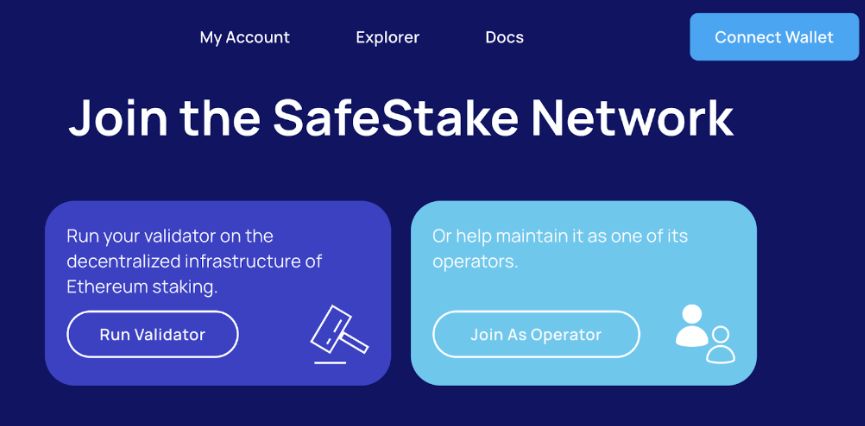
\ Note that at all times in this type of DVT-based protocols, the validator controls the withdrawal key to access reward funds for properly validating tasks on the Beacon Chain.
Key Responsibilities of ValidatorsValidators are central to maintaining Ethereum's security and operation. Their primary tasks include:
\
Proposing New Blocks: Validators are chosen at random to propose new blocks on the blockchain.
Attesting to Transactions: Validators also confirm and "attest" that the transactions in a block are valid.
Participating in Consensus: Validators help achieve consensus by voting on blocks. A majority must agree for a block to be added to the chain.
\
The validator role requires constant uptime and failure to perform responsibilities properly can lead to slashing—a penalty that may result in the loss of some or all staked ETH.
Key Differences Between Node Operators and ValidatorsAlthough validators and node operators both contribute to Ethereum’s infrastructure, they perform distinct roles:
- Functionality:
- Node Operators: Focus on running the blockchain’s infrastructure and relaying data across the network.
- Validators: Actively participate in consensus by validating transactions and creating blocks.
- Staking Requirement:
- Node Operators: No staking requirement; anyone can run a node without locking up ETH.
- Validators: Must stake a minimum of 32 ETH to participate in the consensus process.
- Involvement in Consensus:
- Node Operators: Do not directly contribute to consensus mechanisms.
- Validators: Play a crucial role in consensus by proposing and validating blocks.
- Rewards:
Node Operators: Do not earn staking rewards, although some operators may charge fees for providing node infrastructure to third parties.
Validators: Earn staking rewards in ETH for their participation in block creation and transaction validation.
\
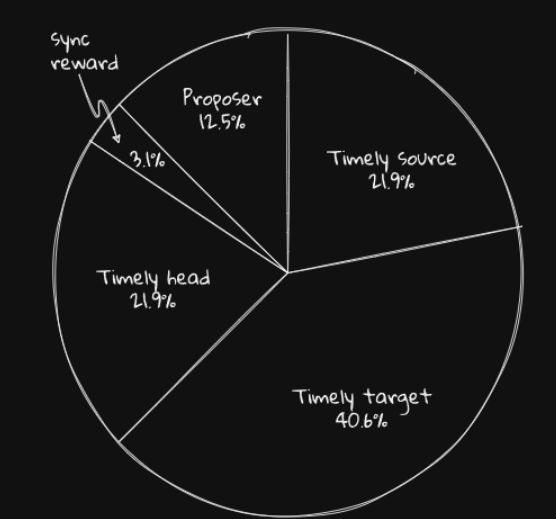
\
Distributed Validator Technology (DVT) is an innovative approach that improves the security and reliability of blockchain networks by distributing the role of a validator across multiple nodes, mitigating the risks associated with single points of failure by improving the overall resilience of the network.
\ DVT leverages cryptographic techniques, such as threshold signatures, allowing a single validator to operate across multiple machines. Rather than relying on a single point of failure, DVT spreads the validation process over multiple nodes, improving fault tolerance, reducing slashing risks, and increasing resilience.
\
Key Advantages of DVT for Validators and Node Operators
\
- Decentralization
Avoiding a concentration of ETH in a single validator by decentralizing and distributing operations and activities among multiple operators instead of just one is part of the basic principles of DVT technology, which SafeStake has as a fundamental architecture in its protocol.
\ DVT encourages a more decentralized Ethereum network by enabling validators to share responsibilities across multiple node operators. This reduces the risk of centralization, where a few validators control a significant portion of the network's security.
\
- Fault Tolerance
Validators operating through DVT can better withstand technical issues like hardware failure or downtime. If one node operator experiences downtime, the remaining nodes can continue validating transactions, ensuring continuous participation in the consensus process.
\
- Reduced Slashing Risks
Since DVT allows validation tasks to be distributed among several operators, the chances of errors or malicious behavior leading to slashing are significantly reduced. Validators can operate with greater security and reliability, knowing that their work is shared across multiple entities.
\ DVT protocols allow multiple nodes to run Ethereum validators by consensus, keeping them online 24/7/365 and available to perform duties, thus minimizing penalties
\
- Lower Infrastructure Costs
DVT helps reduce the overall infrastructure costs for validators. Instead of running expensive, high-reliability machines, validators can distribute their workload across multiple lower-cost nodes, making it more accessible for smaller stakers.
\ For example, with SafeStake DVT, Solo home staker can upgrade their machine to DV staker, participating in the SafeStake network to become an operator and accept third party Validator delegation to earn fees with the same hardware investment.
\
- Expanded Participation
DVT democratizes Ethereum validation by enabling smaller operators to participate in the network without needing to manage the entire validation process themselves. This could lead to broader participation, enhancing the network's overall security.
\ Initiatives like lowering the ETH staking threshold to 4 ETH aim to establish a more extensive validator base, improve diversity and decentralization, and strengthen the security of the Ethereum network. These are some of the ways DVT-based protocols work to expand the participation of ETH stakers.
\
ConclusionIt is essential to understand that validators are responsible for the security and consensus of the network, while node operators manage the infrastructure that allows Ethereum to run smoothly. Validators are needed to participate in earning rewards through staking, and in turn, they must pay fees to node operators for the secure infrastructure that makes this process possible.
\ Given the growing demand for participation in the passive income generated by Ethereum staking, it is crucial to explore alternatives such as Distributed Validation Technology (DVT) protocols. These protocols not only enhance security but also simplify the process for validators by distributing validation responsibilities among multiple nodes, improving decentralization and fault tolerance.
\
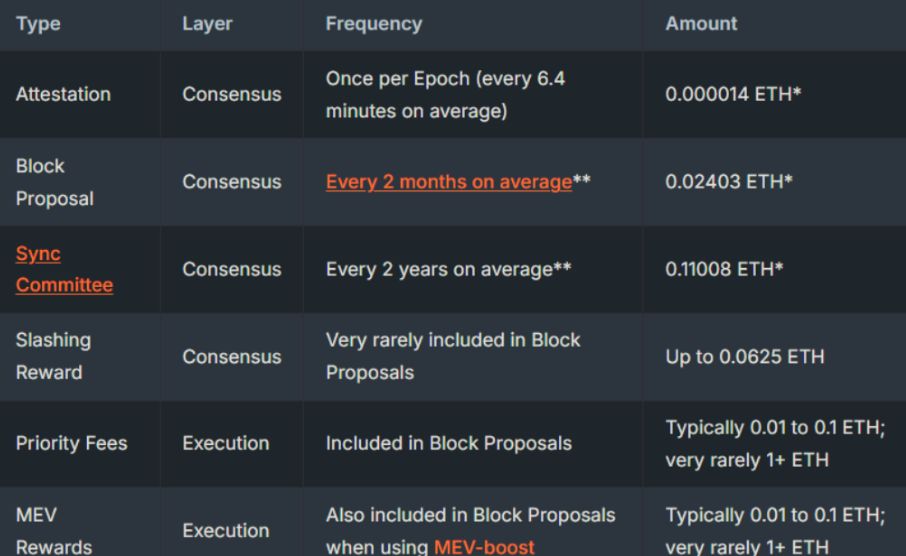
\ Moreover, the use of DVT can lead to greater capital efficiency and more stable average rewards, with fewer interruptions in the duties of the Beacon Chain.
\ In conclusion, both validators and node operators are essential to ensuring that Ethereum remains a secure, decentralized, and scalable network. With innovations like DVT, Ethereum is well-positioned to strengthen its infrastructure, paving the way for more robust decentralized financial systems.
\
- Home
- About Us
- Write For Us / Submit Content
- Advertising And Affiliates
- Feeds And Syndication
- Contact Us
- Login
- Privacy
All Rights Reserved. Copyright , Central Coast Communications, Inc.